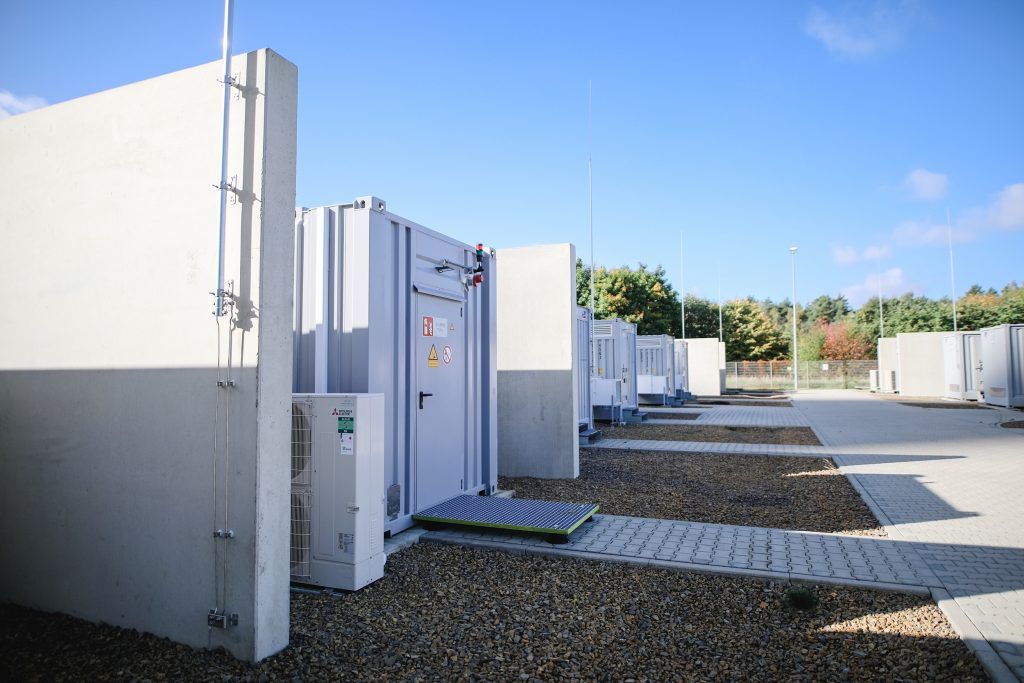Multi-use case scenarios in the context of battery storage refer to the use of battery storage for multiple applications or purposes. This means that battery storage systems are not only used for a specific purpose, but can be used in a wide variety of scenarios — also in combination or alternately — depending on requirements, the available energy sources, their equipment and the agreements with the respective grid operator.
A classic example of a multi-use case scenario is the use of battery storage to integrate renewable energy into power grids. The battery storage system can fulfill various tasks: It can supply electricity very quickly in the event of grid fluctuations (known as primary control power), it can provide electricity if the rapid intervention of other battery storage systems is not sufficient (secondary control power) or it can act selectively to cover emerging demand.
Until now, battery storage systems have been predominantly designed for a single purpose. However, this makes them vulnerable to price fluctuations in this one application segment. By combining different use cases, the economic efficiency of battery storage systems can thus be increased.
The following applies: There is no one perfect solution for every battery storage system. The decisive factor is a good compromise between utilization and conservation of the batteries. Our NOVUM AI Storage Guard therefore not only monitors the status of your systems and warns you of potential security problems at an early stage. It also keeps track of the lifetime of your systems and gives you useful life forecasts for various use cases.
We also provide you with a so-called cost per cycle value. This takes into account how much battery wear a full charge cycle causes in different use cases and converts this into actual costs. This gives them full transparency in their marketing decisions and enables them to distinguish between truly lucrative and supposedly lucrative business. We also keep a fully automated eye on keeping you within your warranty terms with your multi-use case scenarios.

Overview of battery storage usage scenarios:
- Peak load balancing: Battery storage can be used to balance peak loads in the power grid and thus avoid expensive grid fees for particularly high loads. So far, this has mainly been used in the manufacturing industry, but it can also make sense in residential areas, e.g. in combination with charging stations.
- Self-consumption optimization: Battery storage can be used to optimize self-consumption of solar power or other renewable energy sources. The battery can store energy produced during the day and release it when needed.
- Frequency regulation: Battery storage can help stabilize the frequency in the power grid and thus increase grid stability. This is especially important when integrating renewables, as they often produce fluctuating amounts of energy.
- Backup power supply: Battery storage can be used as a backup power supply to provide emergency power during power outages.
- Grid services: Battery storage can also be used to provide grid services such as voltage stability or reactive power supply.
- E‑mobility: Battery storage can serve as charging stations for electric vehicles and thus contribute to the promotion of electromobility.
By combining different applications, battery storage can be used particularly efficiently.

What should battery storage operators consider when deciding on specific usage scenarios?
- Technical specifications: The technical specifications of the battery storage such as capacity, voltage and power must meet the requirements of the selected usage scenario. An unfavorable specification can lead to inefficiency or even damage to the system.
- Energy demand and consumption pattern: The energy demand and consumption pattern of the respective application must be taken into account. For example, a battery storage system for an industrial company with a high energy demand must have a higher capacity than a storage system for a single-family home.
- Operating costs and economics: The operating costs and economics of the selected use scenario should be in relation to the expected benefits and profitability. A scenario that requires high capital and operating costs must deliver a corresponding benefit to be economical.
- Regulatory framework: Regulatory framework conditions such as feed-in tariffs, grid connection conditions and environmental regulations can influence the selection of utilization scenarios. It is important to know such specifications and requirements and consider them before deciding on a particular scenario. At best, all relevant considerations regarding usage scenarios are already included in the planning of the storage facility.
- Service life and maintenance: The service life and maintenance requirements of the battery storage system must also be considered. A usage scenario that requires a high load on the system may result in faster wear and require more maintenance.
By carefully weighing these factors, battery storage operators can make the right decisions and ensure optimal use of their system.




